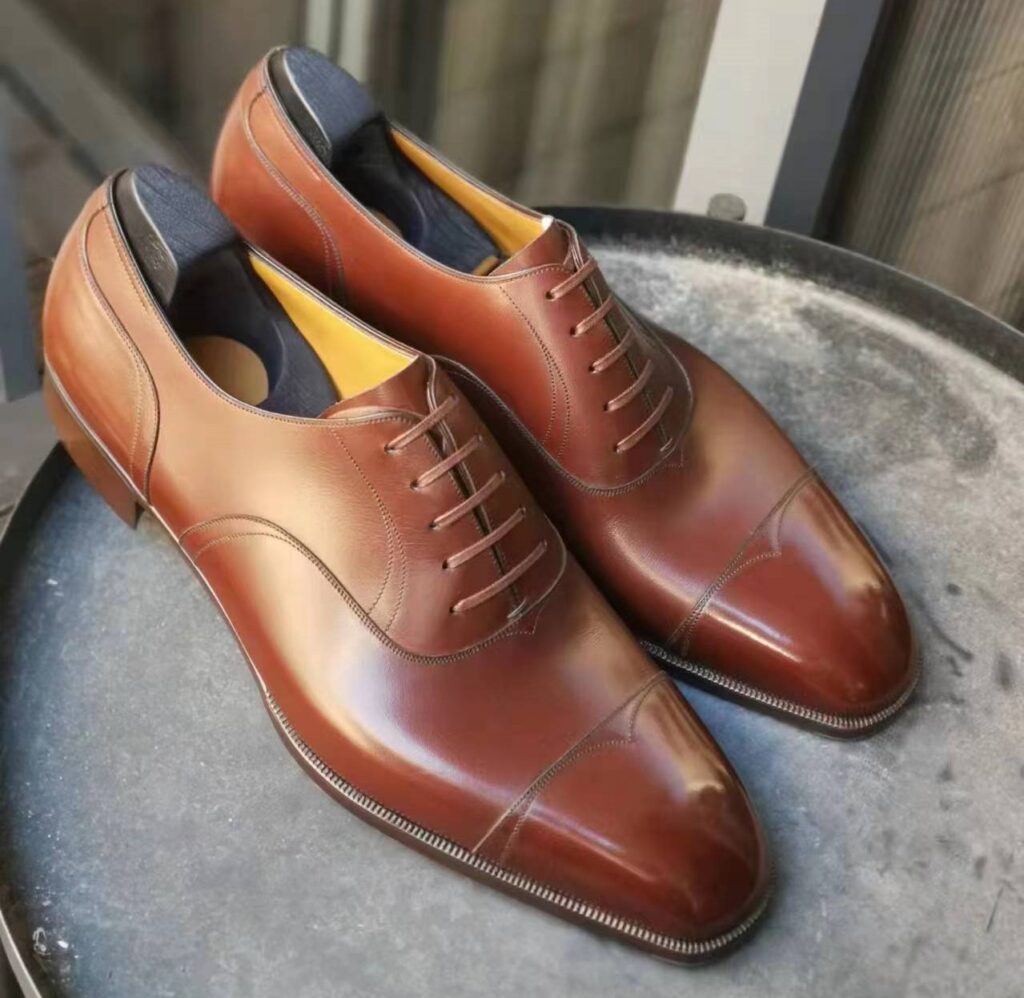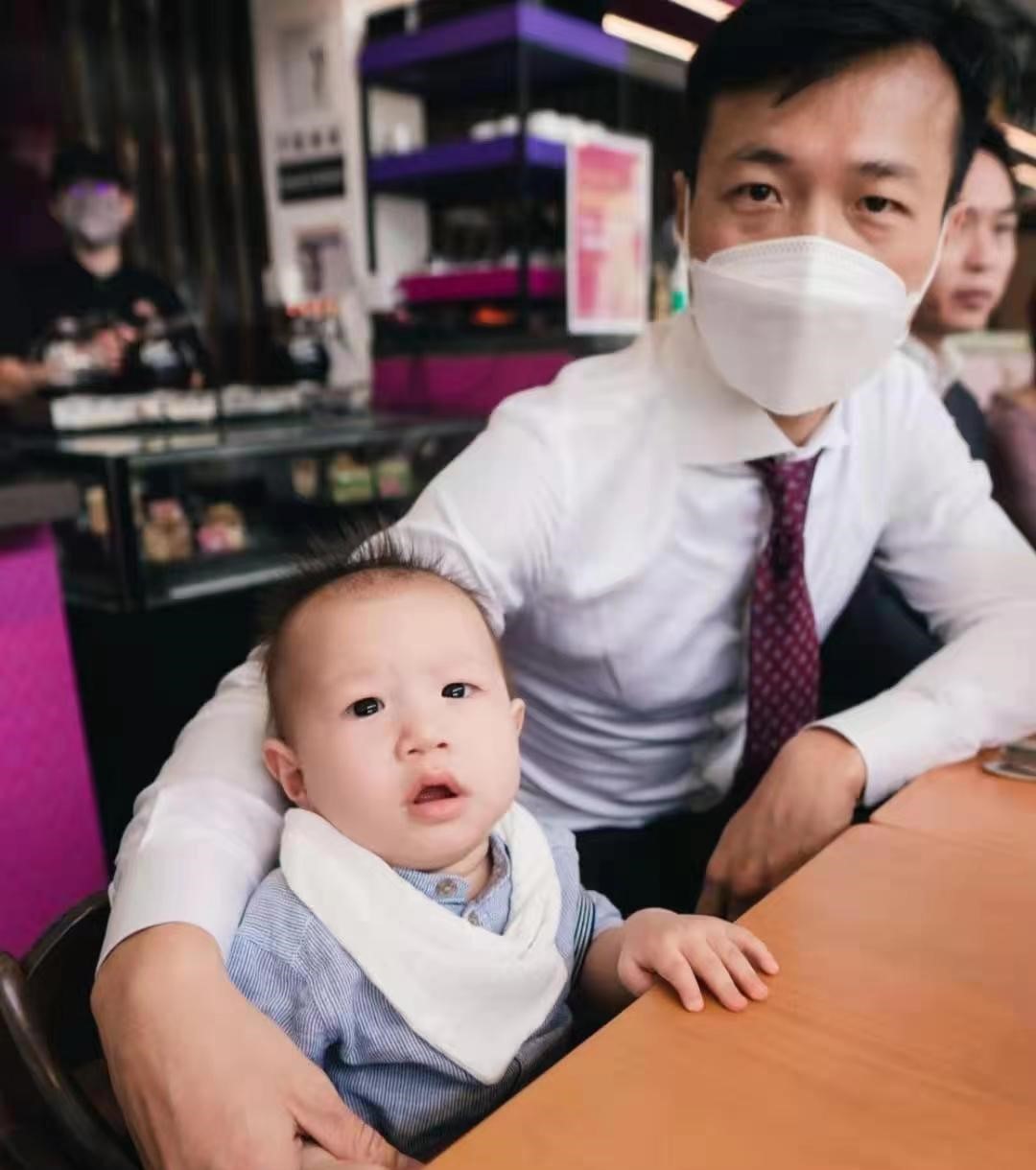There are many KOLs in dress shoe community, such as the leaders, Justin FitzPatrick and Jesper Ingevaldsson, but if one needs to be picked to represent the voice of Asia, Thunder March (Instagram: @Thunder_March) may not have any opponents on the horizon. Although he does not only procure from Asian shoemakers, he definitely showcased a lot of great jobs done by then nameless but talented shoemakers from Asia.
I love to hear what he needs to say about shoes.
Could you introduce yourself, like real name, hometown, career and so on.

My name is Winston Liang. I’m 40 this year and from Singapore. I was born here and have lived here all my life. I’m a medical professional.
How many pair of dress shoes do you have now?
Honestly speaking I lost count (or stopped keeping track) when I passed the 200 pair mark.
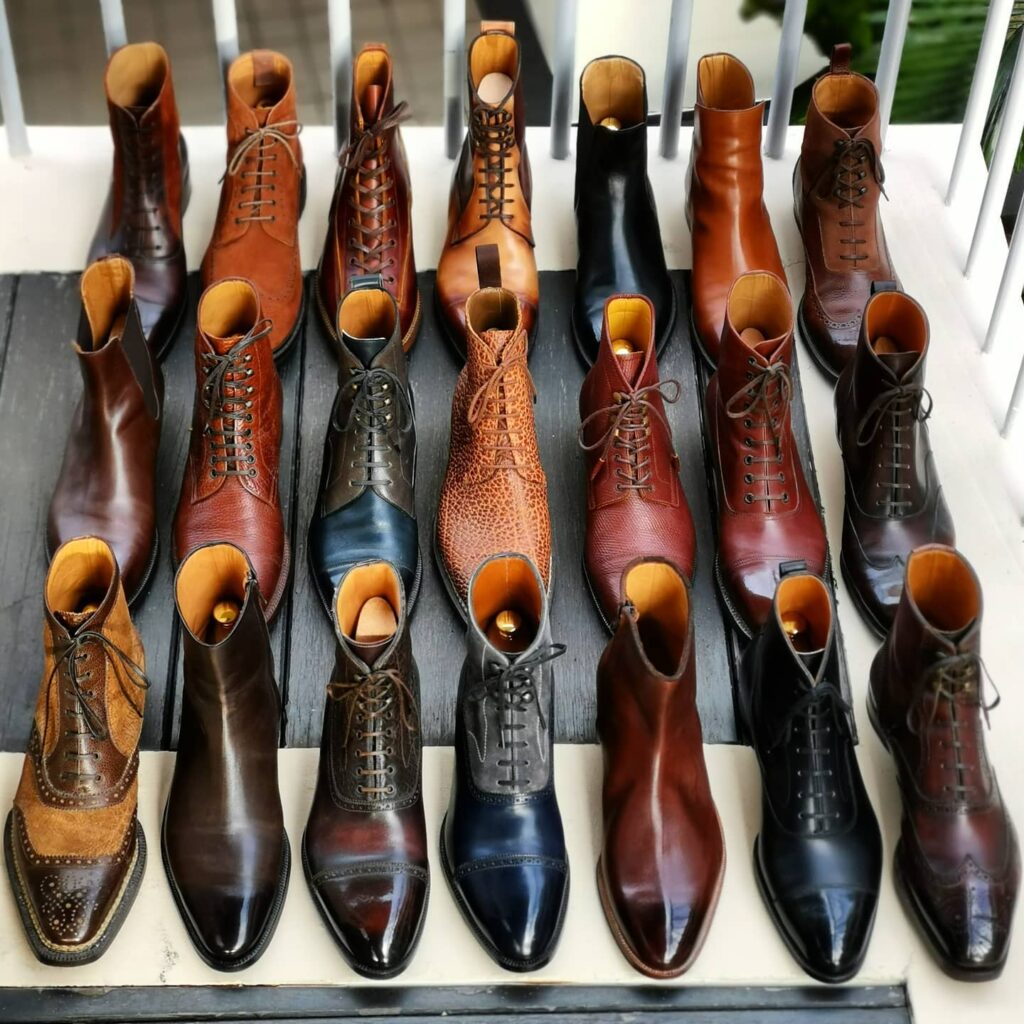
I would estimate that including boots, I have 250+ pairs, with another 15-20 pairs on order and currently in progress.
Which three pairs got most wears?
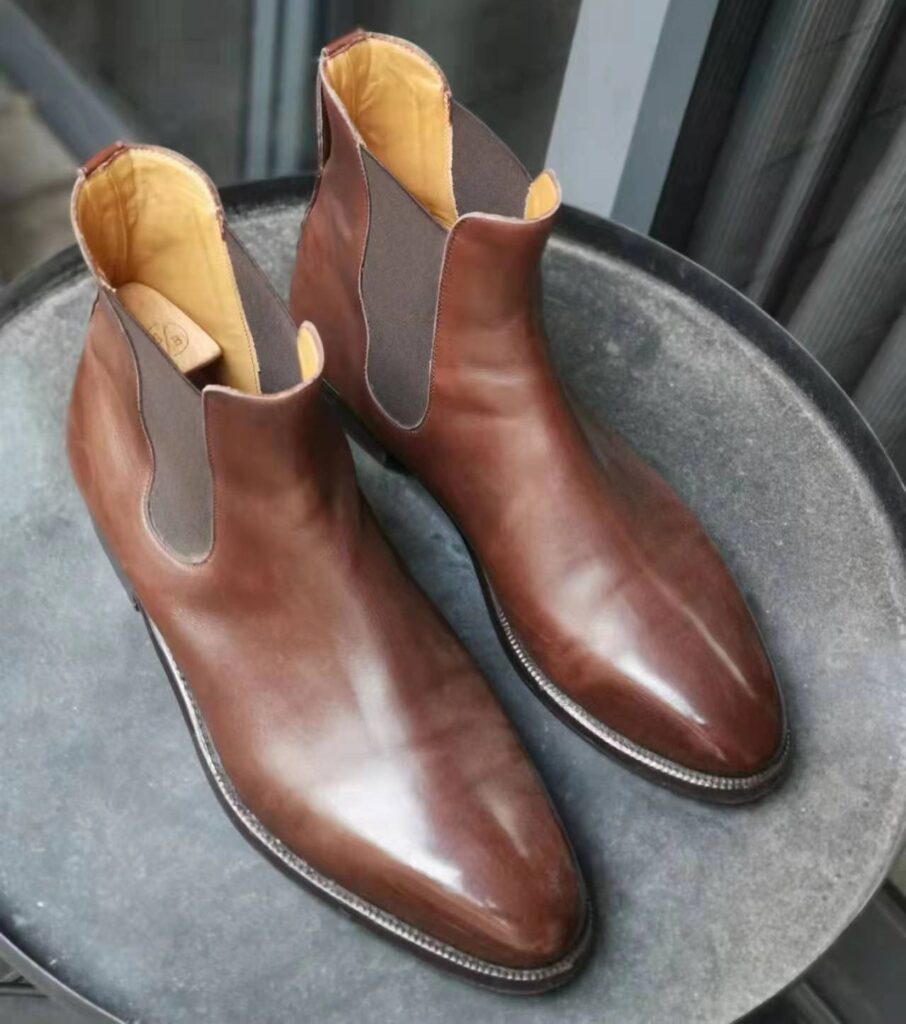
Enzo Bonafe brown chelsea boots.
This pair was made on the 74945 last that fits me very well. I have to admit that I wear it a lot because it’s very easy to put on. And it has a vibram front piece so it’s good for wet weather as well.
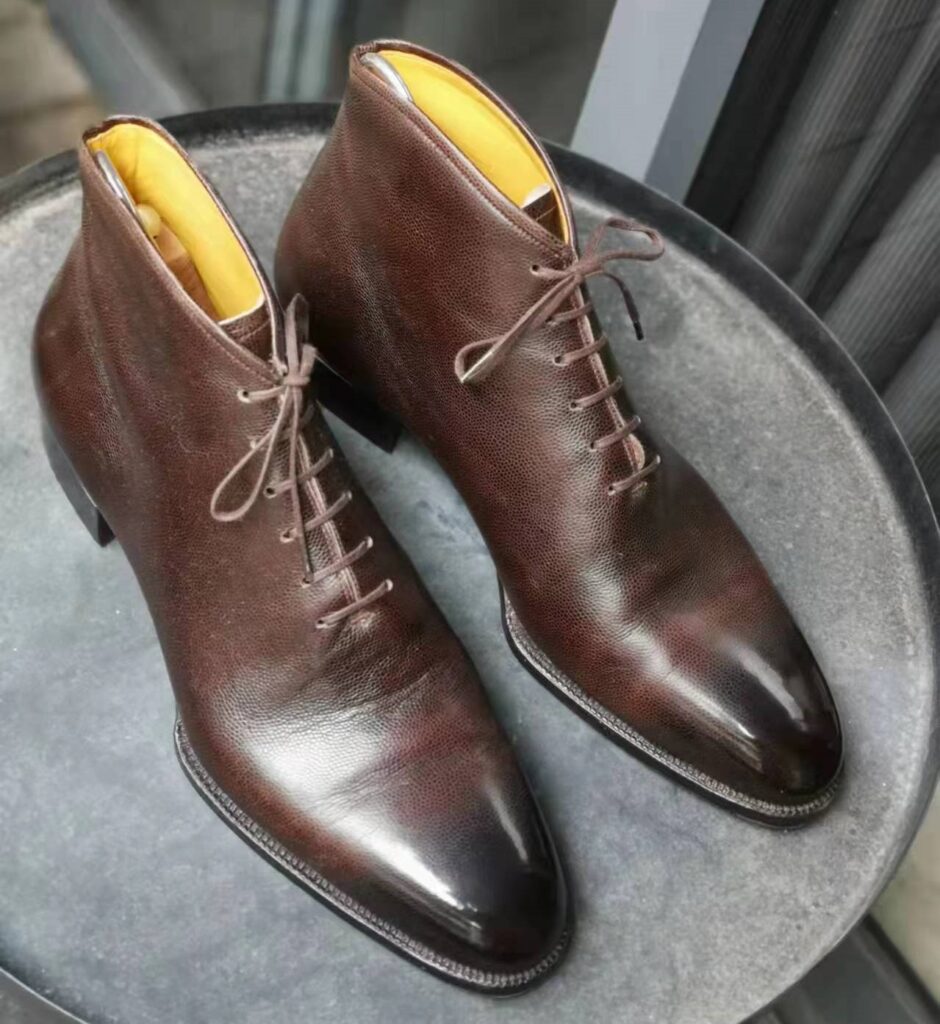
Winson shoemaker Thunderboots.
It’s a dark brown wholecut ankle boot in pingrain from Annonay. I absolutely love this pair because of the clean look and how surprisingly easy it is to slip on despite it not being a derby. It’s made on the Kirin last which has a very nicely shaped almond toe. Very versatile pair too.
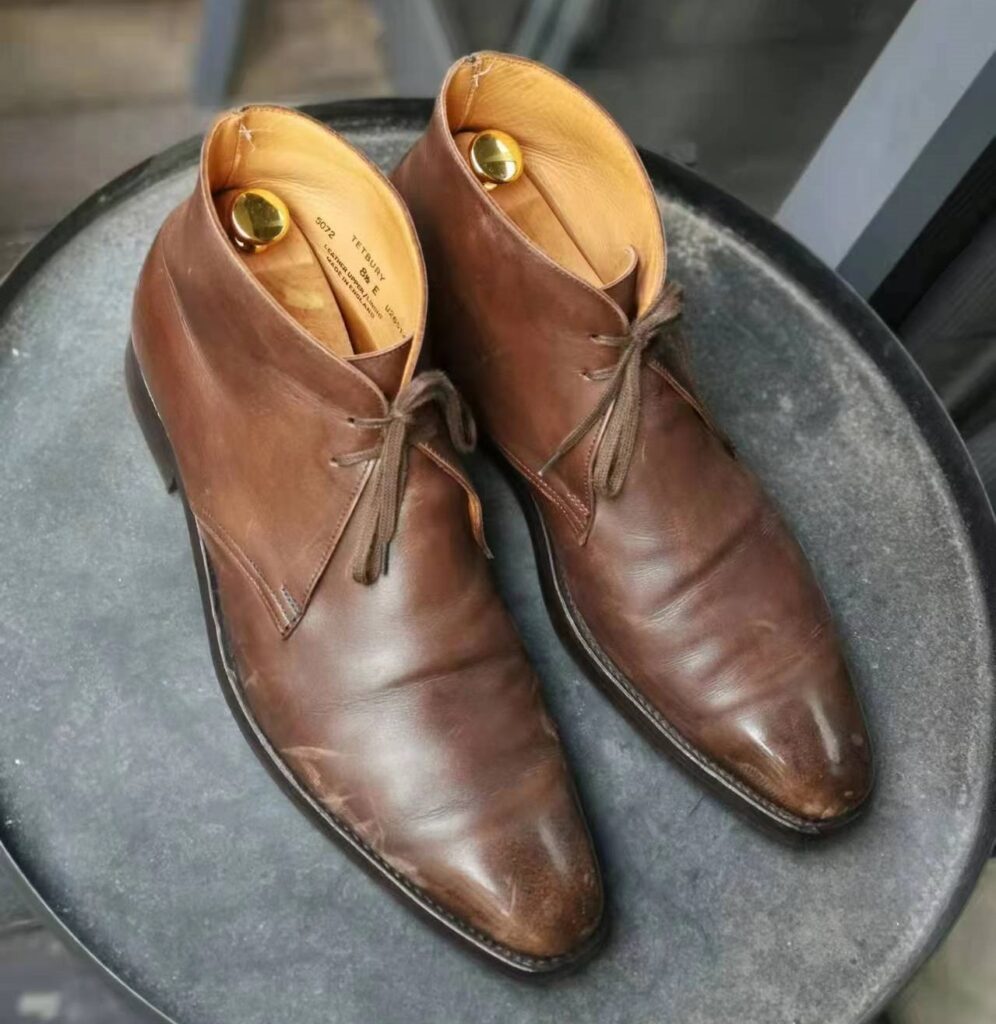
Crockett & Jones Tetbury (dark brown).
A surprising entrant, but truthfully, I’ve worn the heck out of this pair. It’s not only survived numerous rounds of purging but has really aged well. It’s the only pair in my collection on which I’ve used Renomat several times. It’s gone with me on several overseas trips as well, as it’s very versatile, and also comes on and off easily when I get through customs. Its two eyelet, clean look goes well enough with dress trousers and suits, and at the same time, it’s also pretty at home with a pair of jeans. The dainite outsole also makes it an all-weather shoe more or less. And well, I’ve also always liked the fact that Daniel Craig-era James Bond wore this shoe.
How did you fall in love with dress shoes?
Everything kind of started when I found that the mass produced, cemented shoes I used to buy in department stores could hardly last a year before the outsoles came off. If they’d gone through monsoon weather it was worse. This lead me to read up more about shoes, and about which shoes were better made and more durable. This in turn led to my discovery of welted shoes.
My initial experiences were with brands like Carmina, Meermin, Loake and Crockett & Jones; basically, brands which made more entry level Goodyear welted shoes.

I didn’t know a lot about shoes then, but the difference in the build, feel, look, and the leather used was appreciable (at least to me). It was also my first time seeing and wearing shoes that had full leather outsoles.

Following those initial experiences, the next thing that really opened up my horizon was getting to know DW Frommer on Styleforum.

With him being a boot/shoemaker, and a strong advocate of his craft (and also very generous with his knowledge), I got to learn a lot more about shoemaking processes, through reading his posts and interacting with him.
I then started really appreciating makers who focused on shoes that were handwelted, and with that, shoes that weren’t as “industrially” made. At that point, I no longer saw shoes as merely being pieces of footwear, but also as things that could be very beautifully made and finished, and that could also be used as a form of artistic expression and creativity.
How does your taste on shoes change over the years?
I started out getting the “staples”, which were mainly the classics, so to speak. Captoe oxfords, full brogues, wholecut oxfords, penny loafers, double monks, 3 eyelet chukkas, for example. I stuck to “safe” colours like black and dark brown mostly.
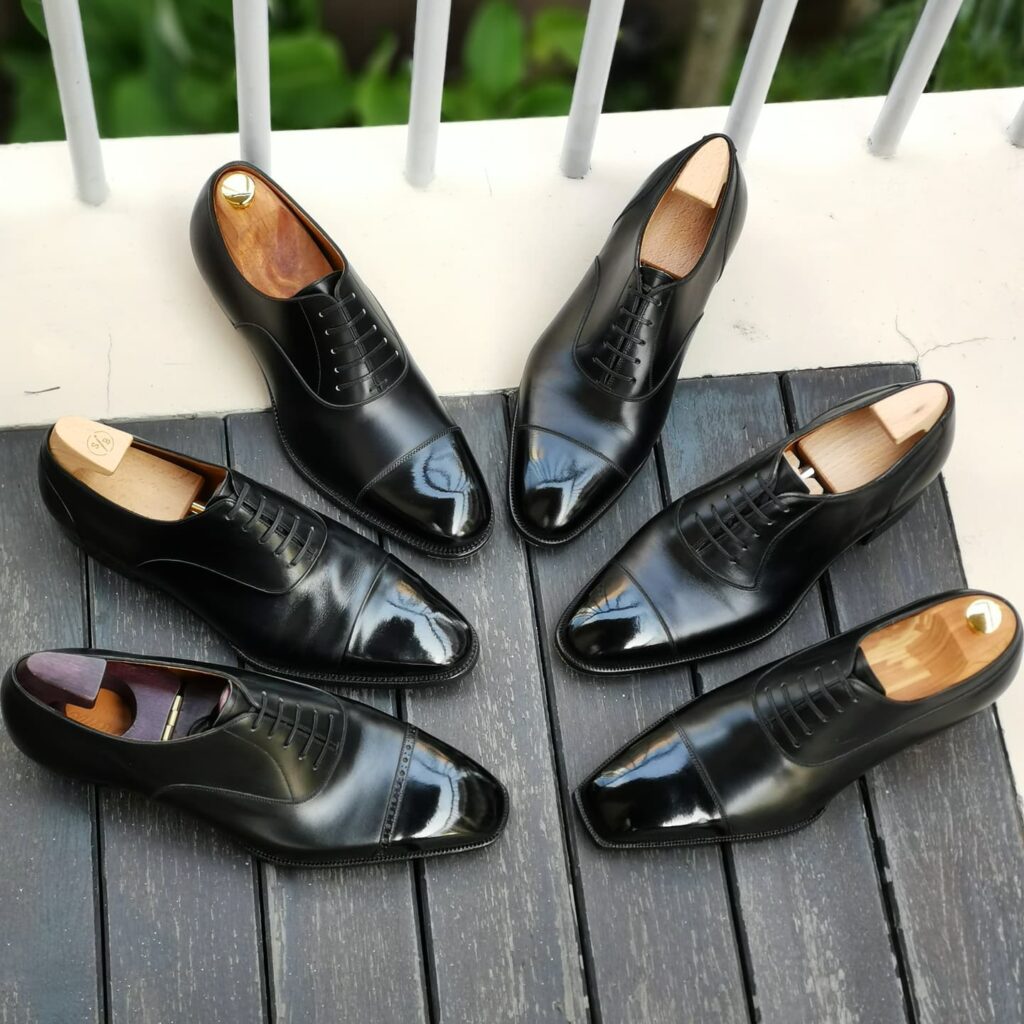
And when I felt that I had the essentials covered, I started to venture into bolder choices; burgundy and navy shoes, two-toned shoes, spectators, exotic leathers, different textures and combinations, and also boots. As time passed, I started running out of ideas.
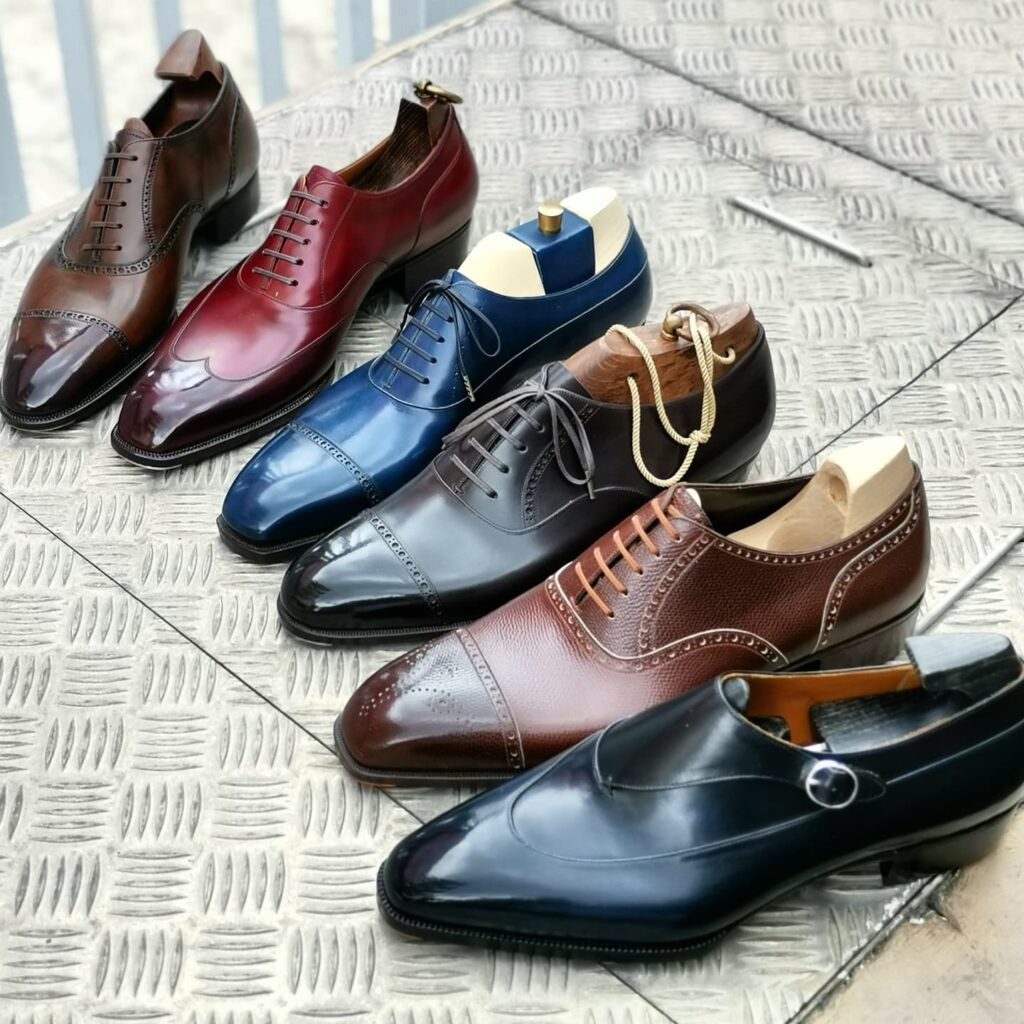
These days, I find myself mostly buying from makers who fully handmake (handlasting, handwelting, with hand stitched outsoles) their shoes. I’ve sold off most of my early GYW shoes and am now “recollecting” the classics, but now as fully handmade versions (as mentioned above). I really don’t get tired of the classics, so I have several versions of brown captoe oxfords, or black balmoral oxfords, with just subtle differences in designs and toe shapes.
I also wear boots a lot, especially balmoral boots, even though they are a hassle to put on, because I prefer how my trousers drape over the shaft of the boot instead of a shoe, and I don’t need to worry about finding that “balance” between amount of trouser break and exposed sock.
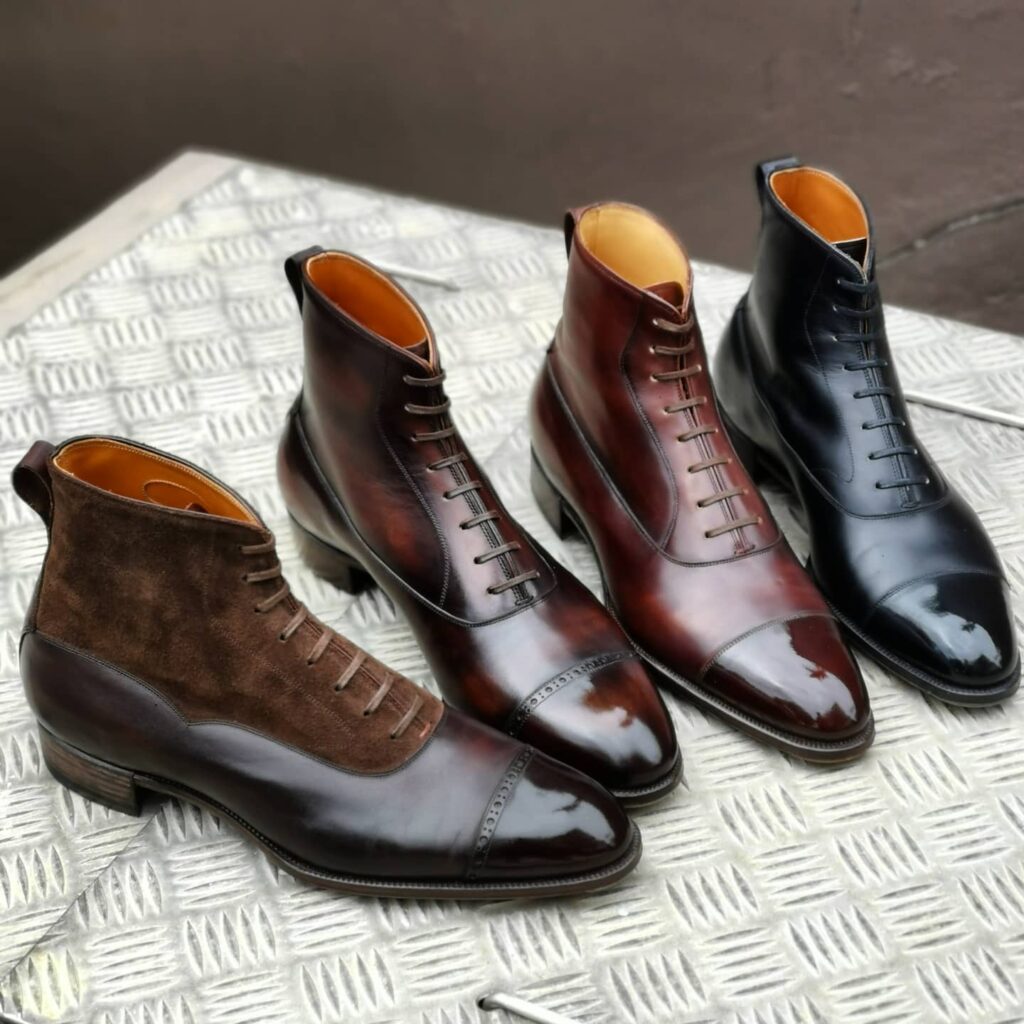
I generally don’t wear anything loud, even above the ankles, and I also don’t like crazy colours. So, to answer your question exactly about taste, I would say, my taste is, “the less I’m noticed, the better”.
What shoes can still grab your wallet after owning so many shoes?
I am very open still, to trying out new makers and brands. And I like makers who have a strong sense of identity. Handwelting is a must, and is to me, the most essential thing I look for in a pair of shoes. Don’t get me wrong, I think there’s nothing wrong with GYW shoes, but for me, since there are now so many makers who make handwelted shoes, and who cater to so many tastes and styles, I have just been sticking to these makers.
When I find a maker who strikes a sweet spot in terms of price / quality, and whose style I like, I usually end up buying from him for a good long while, and might end up with 20-30 pairs easily, from that one maker.
At the moment, the two I buy the most from, are Gordon JimJun, and Winson Shoemaker. It’s a cycle of receive one pair, order the next one (or two), wait, then repeat.
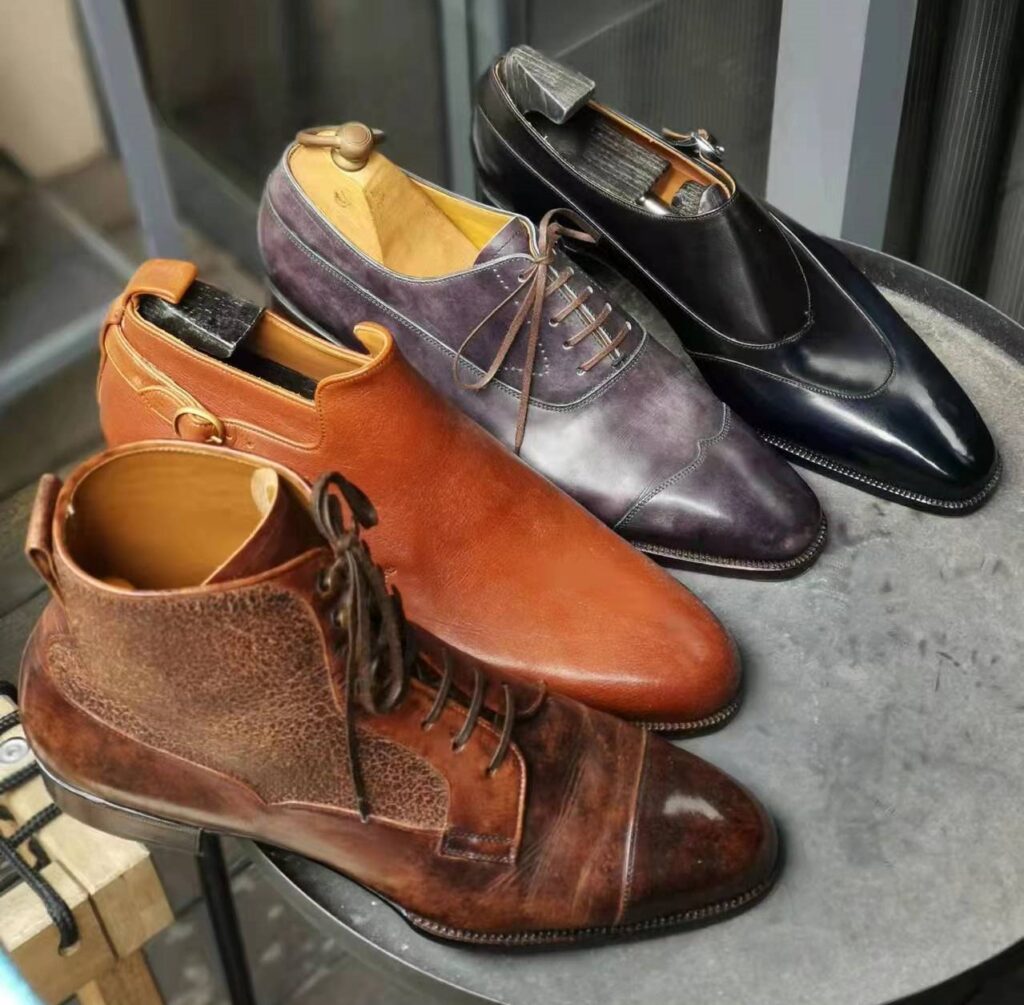

I would also like to buy a lot more from Yim, because he’s so far ahead of the rest, but he is trying to focus on his RTW range, and is steadily going to do the fully handmade stuff less and less.
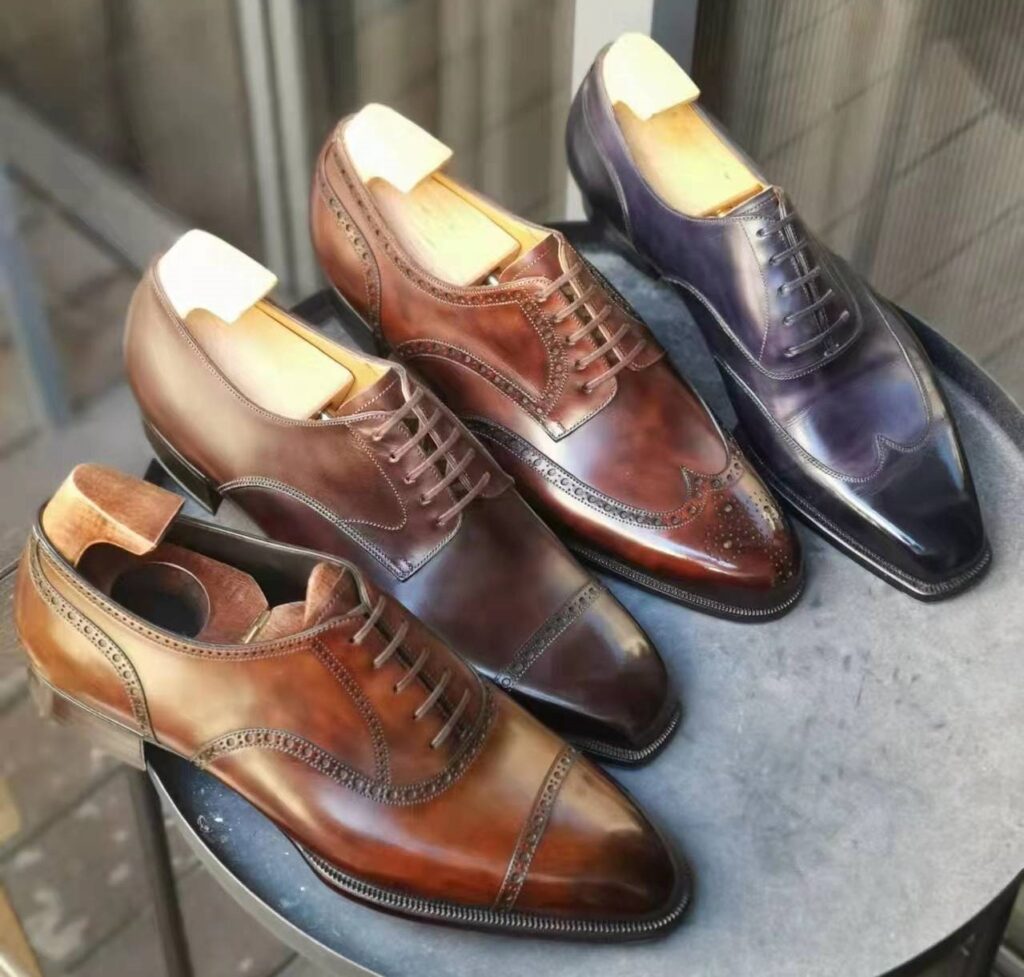
He’s venturing into boots, of which I have 2 pairs on order, and I’m really excited about.
Apart from that, I’ve also been increasingly interested in hobbyist shoemakers and outworkers especially in Japan. One maker who’d impressed me a lot recently is Tatsuya Kamikubo, who has a full time job and makes shoes only in his spare time after work. Though it takes a long time to get a pair from him, his work is at a level that is higher than a good number of pro / career shoemakers.
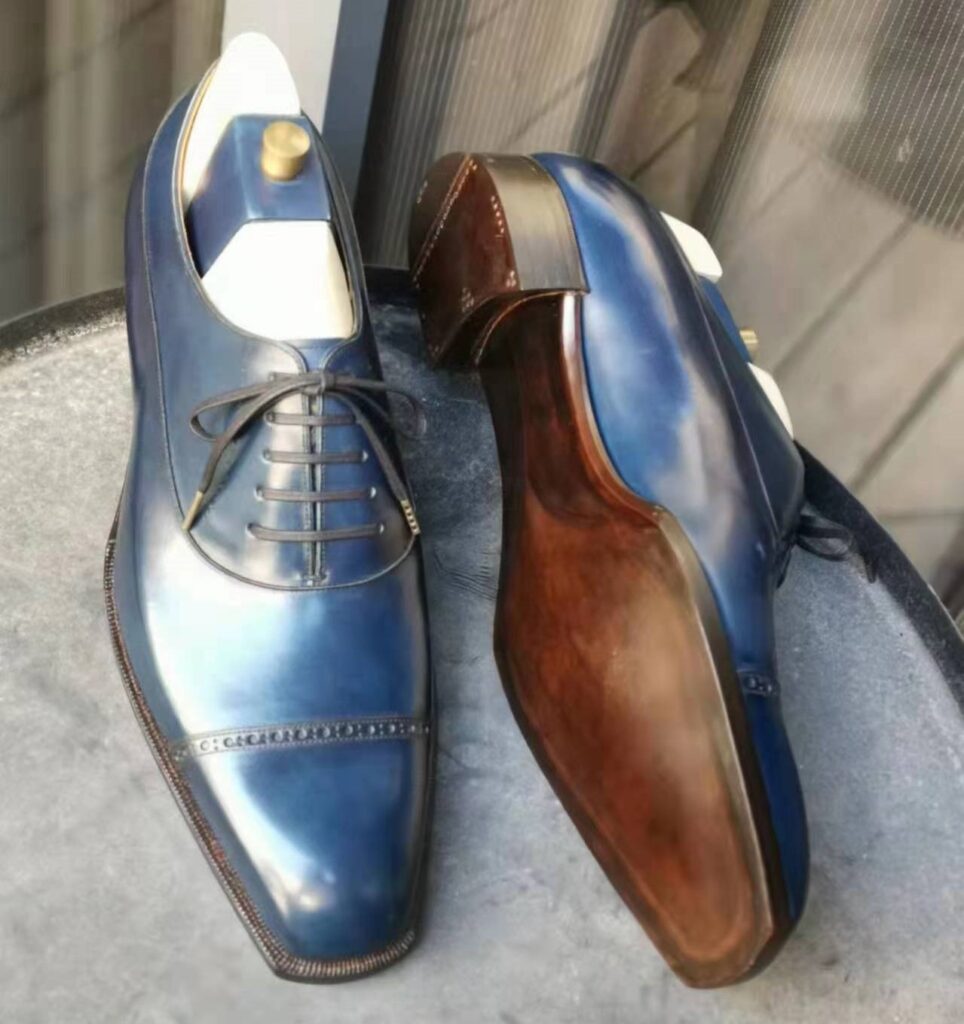
Another maker I have recently been ordering from is Takahashi Nayuta.
He’s been an outworker (mainly bottom maker) for some time, mainly doing work for other brands, but he is also capable of pattern making and closing, so he has the necessary skills to be an A-Z maker.
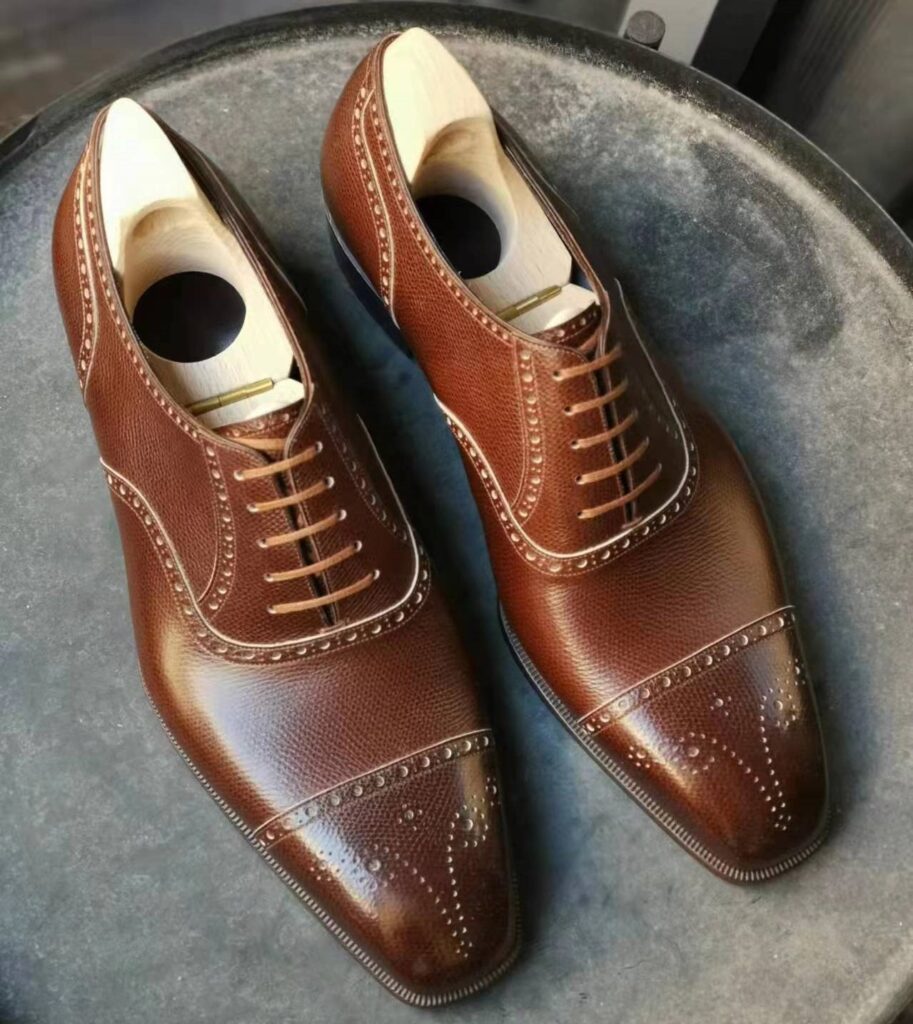
His work is also incredibly incredibly good.
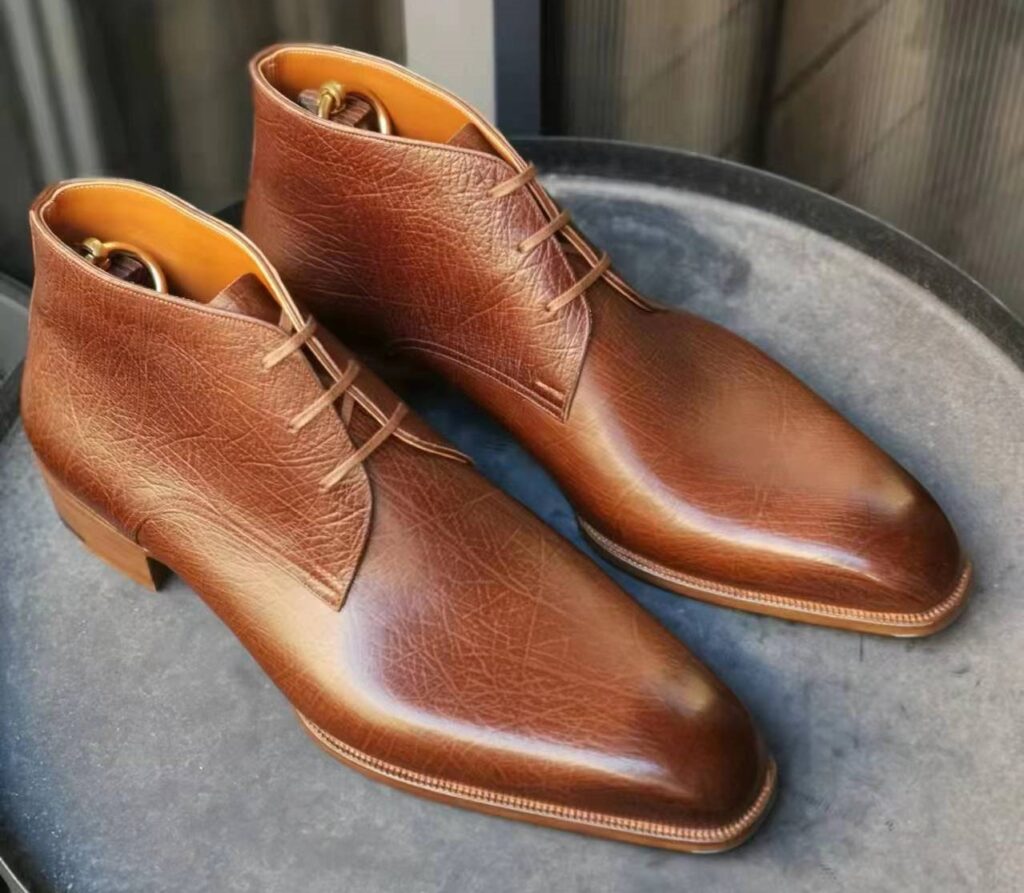
So yes, there are many makers / shoes still, that are well capable of grabbing my wallet.
Talk about the industry trend please.
I’m definitely not an expert on industry trends, so I don’t think I can answer this question particularly well. But what I do see is that there is a general increase in the knowledge about shoes and shoemaking of the average customer interested in welted shoes, given the relative ease with which you can glean information from the Web, on forums, etc.
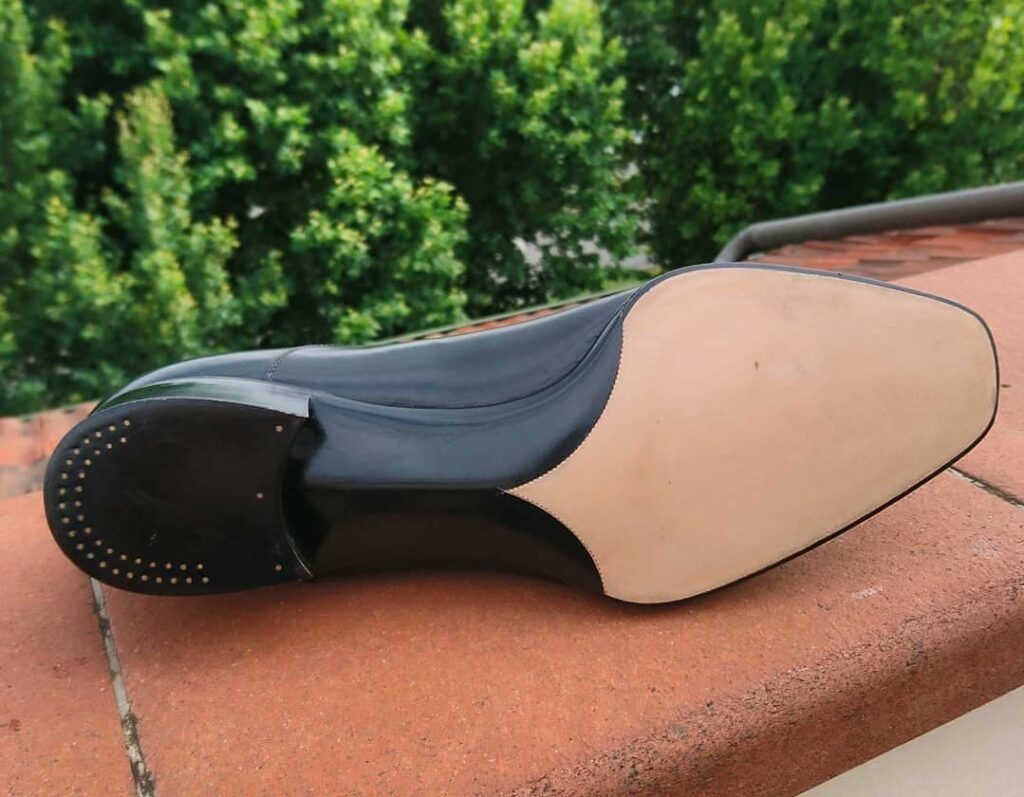
At the same time, there also seems to also be increased transparency amongst brands and makers, in terms of sharing their methods and processes online, be it through YouTube videos or IG. Makers like Siroeno Yosui, Ken Hishinuma, Terry Kim, Iberis are all regular uploaders of shoemaking videos that are both educational /informative, and also a joy to watch. So in that sense, I think the industry is becoming a lot more “open” so to speak.
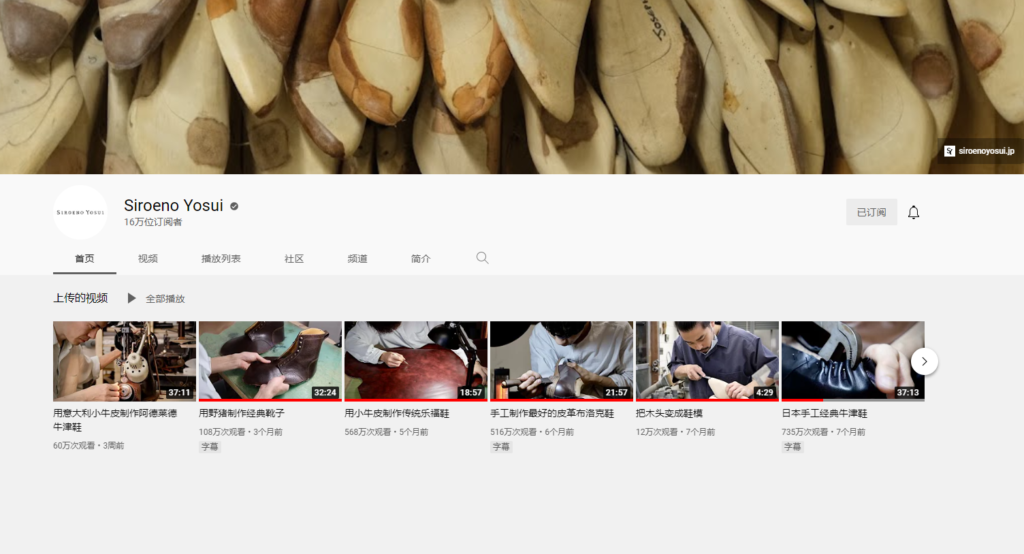
I also think that there is an increasing consumer “awareness” or emphasis on the idea of “value”, ie, am I getting enough shoe to the dollar. Which relates to the earlier point on customer knowledge. Customers will probably start scrutinising makers a lot more, and considering things like materials, construction methods, finishing details and so on, in relation to how shoes are priced. I think on one hand, it makes things a lot more demanding / difficult for makers, but probably also drives others to really try and make the best shoe they can at a particular price point, to be competitive. It’s a double-edged sword.
A tough question, people are more and more attracted to the fancy shoes, however they are not able to pair them harmoniously. Is it strange? Why not go back to the basic, such as black cap toe oxford, penny loafer.
Actually I think it’s a bit hard to generalise for this question. I wouldn’t say that there is an increasing attraction towards louder or fancier shoes at the moment. I just think that there have always been inherent stylistic differences between different makers from different countries. These differences have and will always exist, with each one appealing to a different group of people. The French and Italian makers do tend to have fancier colours / patinas and designs, and more aggressive last shapes, just as the English have always tended to favour a more conservative, reserved style.
I think that there are two main reasons why someone would buy or “get into” fancier shoes. One, that person likes loud or fancier clothing to begin with, with the shoes reflecting his or her sense of style. Or two, that person has probably had the basics and classics covered, and is now trying to experiment with shoes that are a little different or perhaps as you put it, more fancy. In this second group, especially for those with a wardrobe not particularly flashy, generally consisting of CBD essentials like plain grey or dark navy trousers, you would probably expect some problems when trying to pair these items with a pair of ruby red wingtip boots, for example, haha.
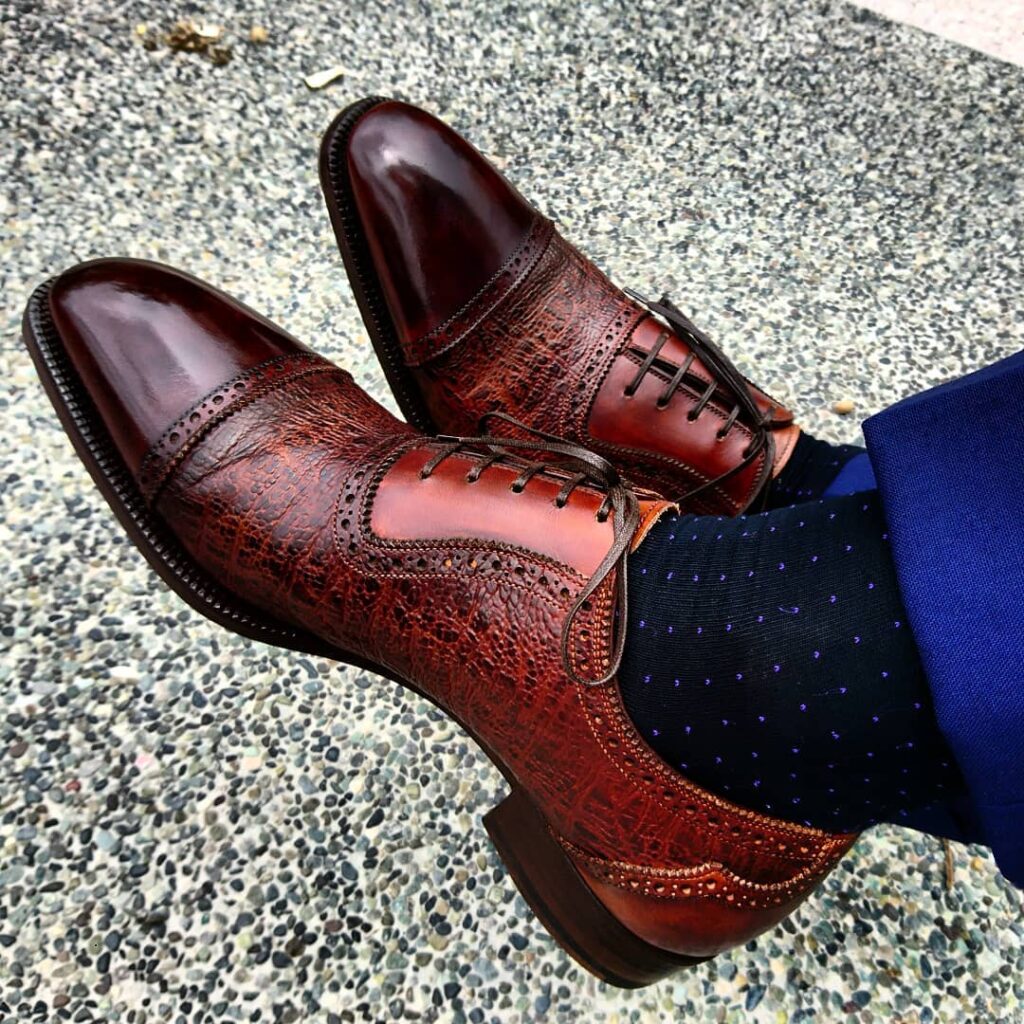
That being said, I think that the majority of us, would still start with, and fall back on, fairly classic and conservative styles, more often than not. They are classic for that exact reason.
Do you think Asian shoemakers have some advantages over westerns if any?
First off, as an Asian myself, I must say that I’m really proud of the progress made by Asian shoemakers in recent times, and even prouder to have gotten to know some of these makers, and to own some of their shoes over the years.
In all honesty, on the contrary, I think Asian shoemakers face more a lot more DISadvantages as compared to European makers.
Firstly, coming from a part of the world without a strong history or tradition of (welted dress shoe) shoemaking, most Asian shoemakers (or at least those outside of Japan) face some degree of difficulty in learning the skills of the trade to begin with. I know of several Asian makers who are largely self-taught, and started out learning the craft through videos or disassembling old welted shoes to figure out what went where. Many haven’t had the benefit of formal lessons or apprenticeships.
Secondly, there is also the difficulty in procuring good quality materials to work with. From upper leathers, to insoles, outsoles, heel lifts, lasting nails and lining leather. A lot of the reputable tanneries and sources are EU based, and Asian makers have always had to grapple with high import taxes when buying these materials. For small volume makers importing only a small amount at a time, the costs are even greater. There has probably been some improvement in Asian tanners recently, with tanneries like Shinki building a good reputation, but I think in the near future, the EU tanneries like Annonay, Weinheimer, Ilcea, Haas, Zonta and so on will still remain the benchmark for dress shoe uppers.
Thirdly, I think Asian shoemakers and brands still face strong bias or discrimination, even from within their local consumer market. I’ll cite the example of Japan first. Immediately post WWII, made in Japan products were extremely looked down upon and poorly regarded, but steadily, they’ve built up their standards and quality to the high level they are at today. There is a great appreciation of how good Japanese craftsmen and artisans are, but ironically, a lot of Japanese who have the money to spend, actually still prefer EU brands and labels, even if a local brand might be better made. I don’t wish to open a Pandora’s box of what qualifies as “better made” so I’m going to stop right there. Similarly, after speaking to a number of Chinese makers, they had the exact same thing to say, of their products being looked down upon by their own countrymen, regardless of how well they are made.
So yes, the hurdles faced by Asian makers are great. Because as long as these biases exist, they will have to keep pushing harder and harder, putting more time, sweat, effort, and ultimately, money, into each pair of shoes to sell it at X amount, just to make a living.
All that being said, amongst the Asian makers that I’ve met and known, what they all have in common, is that they are driven, ambitious, and motivated to be the best they can be. But these are also qualities that any human can have, regardless of where they are from. So, anyone can be a great maker, if they have their head and heart in the game.
Hopefully, I’ll continue to be able to help support some more of these new and emerging makers in the years to come, regardless of where they are from.
Recommend three shoemakers based on different price point.
I think narrowing it down to 3 makers is a bit difficult, so I’ll work with some recommendations within 3 price points.
I will apologise in advance because I haven’t been keeping very up to date with the makers in the price brackets below these.
€500-550 range
Antonio Meccariello (Argentum welted)
AM’s Argentum welted range was his first foray into the RTW market and featured machine welted shoes on a one-piece insole with a machine cut holdfast. While he has been steadily transitioning his shoes to mainly handwelted stuff, his shoes have always featured good bottom work, a robust look, and very good quality upper leather.
Gordon JimJun (Advanced Goodyear welted)
For GJJ, his Advanced GYW technique also features a one-piece insole but with the holdfast turned upwards from a lateral cut on the outside edge of the insole. There is no gemming. Regardless of the inseam construction, the rest of the finishing processes are the same. What I find he really excels in, is his very consistent and very clean bottom work. The outsole is machine stitched, but the welt is fudged down so cleanly and tightly that it looks better than some of the hand stitched outsoles I’ve seen.
€800-900 range
Winson Shoemaker
Prior to his recent price hike, I feel that Winson was probably the most massively underpriced maker I’d ever seen. All his shoes are hand lasted, handwelted, with hand stitched outsoles. The price also includes a blind welted waist and shoe trees. And if you opt for an open waist, there is also a price break. His work is very well rounded, and he is open to new design ideas, so he’s always been very fun to work with. Unlike GJJ, he employs a more glossy finish to his heels and outsoles. Has been consistently improving from one pair to the next. Really love his stuff.
Hephaestus Shoemaker
I’m new to the game and still discovering things with this maker, but with the first two pairs I’ve got, I’m suitably impressed. I’m putting this maker in this price bracket because this is as expensive as it gets. He has a very very wide range of offerings in terms of construction and level of finish, so his typical prices are lower than this. So a basic pair of handwelted shoes in one of his standard designs, no bells and whistles, no trees, comes in at 400ish USD. So his price range spans this bracket, the one before, and even lower than that.
Hung Shoemaker
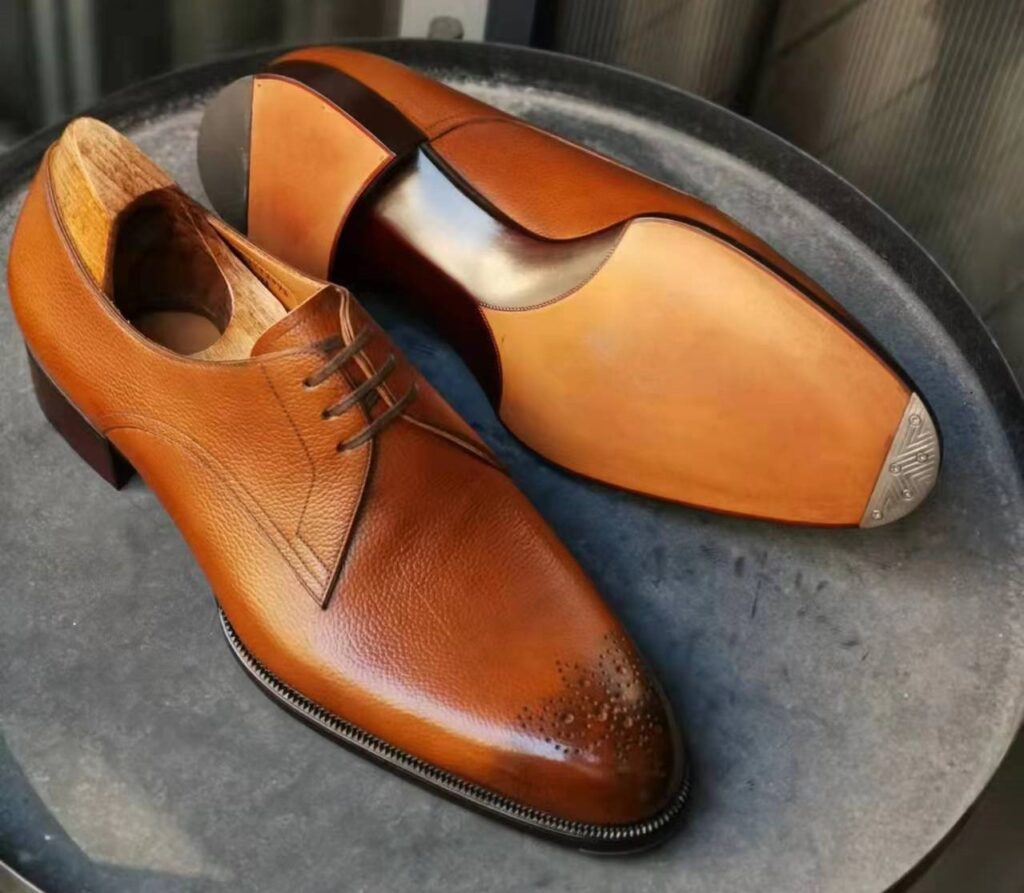
At the moment, he’s put his brand on hiatus but I’d felt that I should still mention him as he’s just an incredible maker. And at about $950 USD base price, it’s almost unbelievable. He’s an A-Z maker and so well-rounded, that in my opinion, I think his work approaches some of the top tier Japanese makers’ works I have.
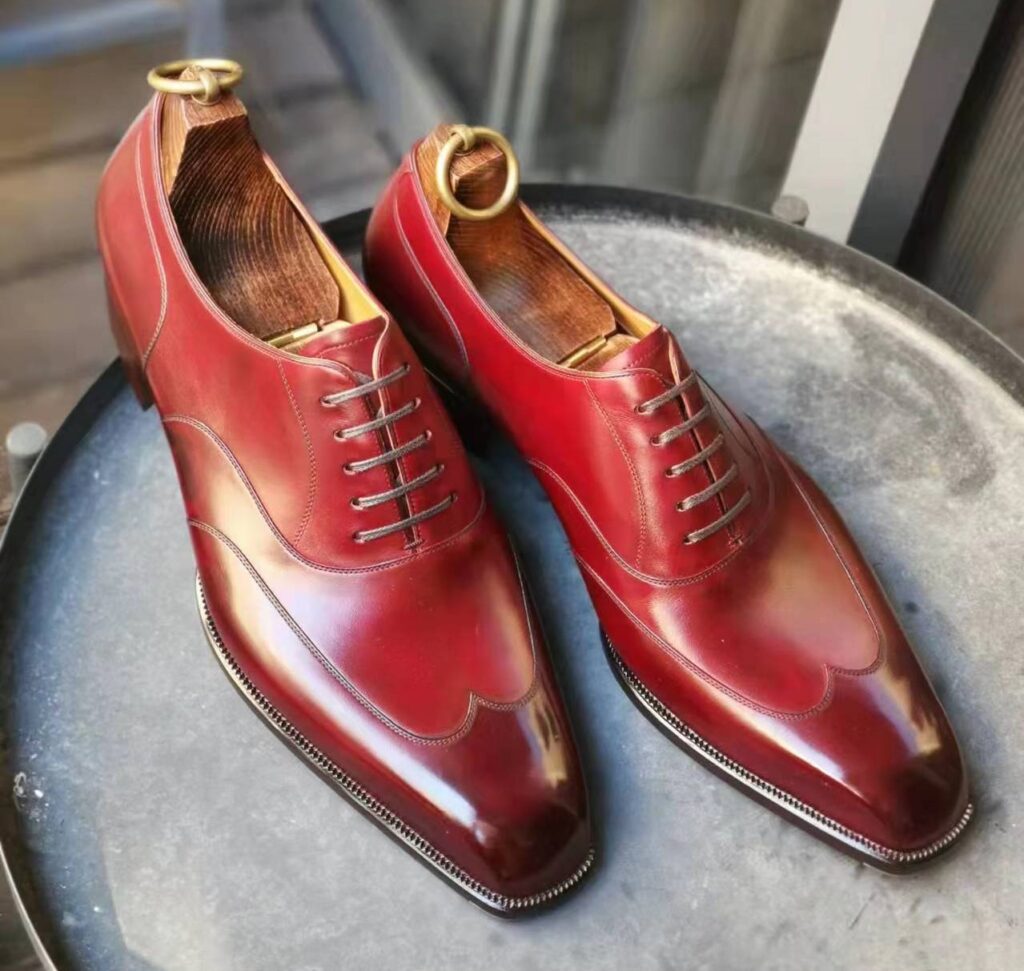
€1400-€1500 and slightly above
I am choosing this price point because I feel that it’s a reasonable entry price for the upper echelon of fully handmade (hand lasted, handwelted, with hand stitched outsoles) piecework.
Yim shoemaker
Earlier on I mentioned that he’s slowly moving away from his fully handmade stuff, but if you can get an order in, his best stuff (he also has an entry level MTO that’s cheaper) is incredible. He’s evolved and improved a lot over the past few years, and amongst all the shoes I own, I would rate his work within the top 3.
Kiyonori Udagawa
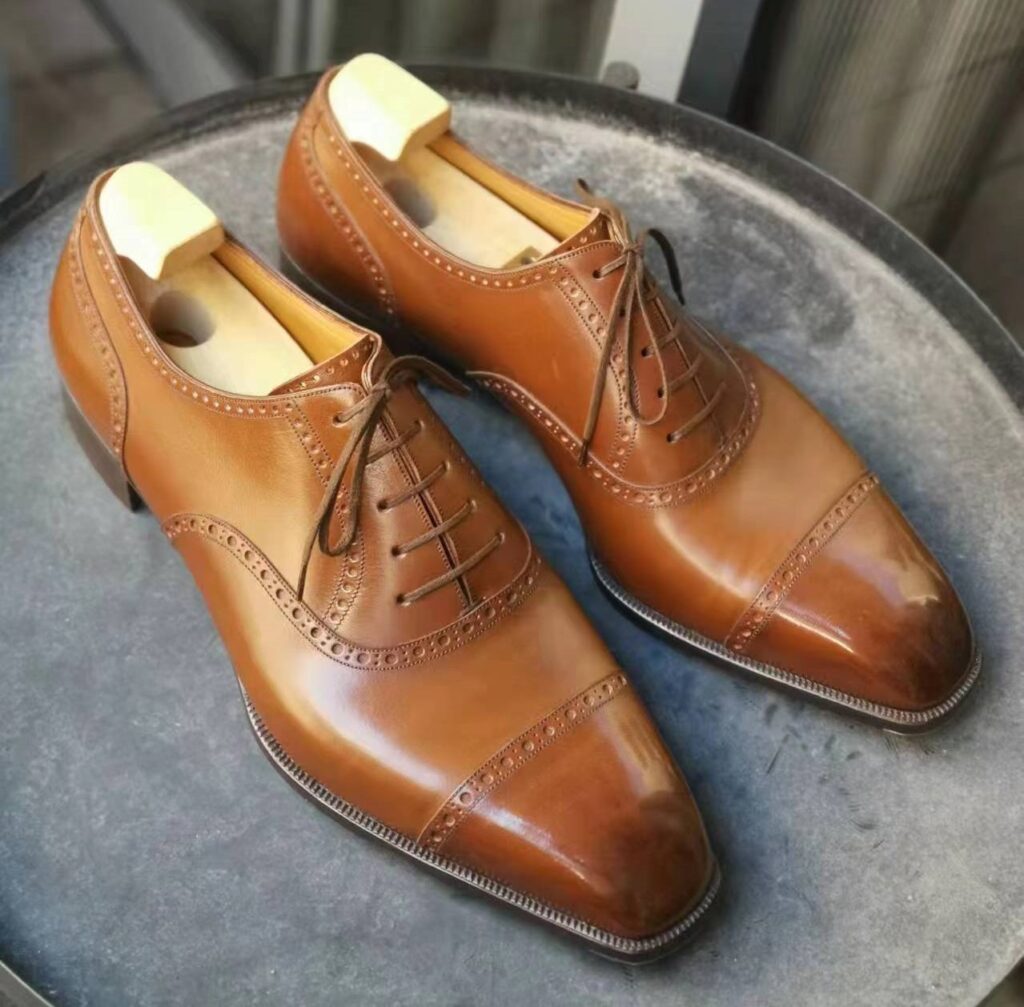
A very very good maker who’s pretty under the radar. He was doing mostly outwork at the time I got to know and meet him. Overall a very English feel to his shoes. Has very nice lasts and his work is very balanced and tasteful. He won’t admit it, but even though he really excels in his bottom making, his closing work is really impressive as well. Amongst my Japanese shoes, I think he’s second only to Murata San. At the current Yen exchange rate, his MTO price is approximately the same as Yim’s.
